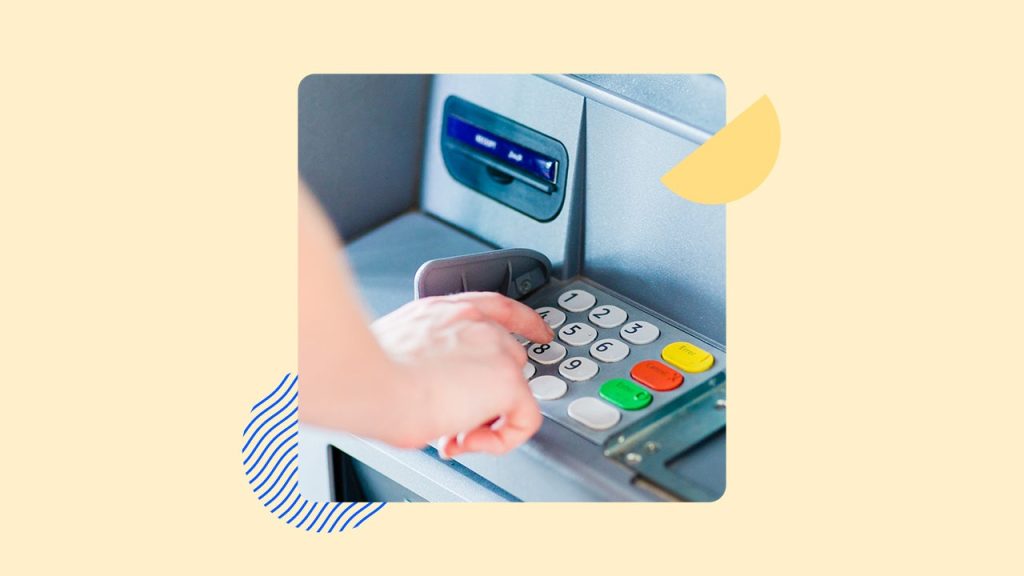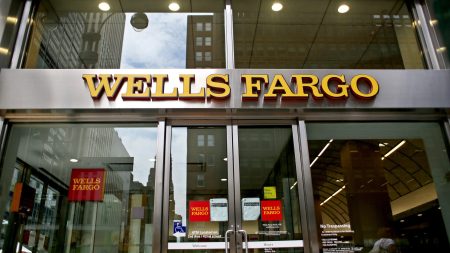Convenient access to your cash often comes at a price, as anyone who’s used an out-of-network ATM knows. In fact, the average total fee associated with such ATM use has been rising steadily overall. You’ll currently pay a record-high average of $4.73 in fees for using an out-of-network ATM — beating the previous high of $4.72 in 2019 — according to Bankrate’s 2023 checking account and ATM fee study.
“ATM fees are biting harder than ever as the cost of out-of-network withdrawals hits a new record high,” says Greg McBride, CFA, Bankrate chief financial analyst. “But with less need for cash and expansive ATM networks that make it easier than ever to stay within network, the fees are easily avoidable and need not be a frequent drain on your bank account.”
Unlike ATM fees, some other bank fees are on the decline. The average overdraft fee has fallen to $26.61, which reflects a decrease of 11 percent over the amount from Bankrate’s 2022 study. While this average is down, overdraft fees are still charged by 91 percent of accounts that Bankrate surveyed — and they can run as high as $38.
The study also found that 45 percent of noninterest-bearing checking accounts are free, in that they don’t charge a monthly service fee or require a minimum balance. This is down slightly from 46 percent in 2022. Of the interest-bearing checking accounts surveyed, the average annual percentage yield (APY) is near rock-bottom, even though the Federal Reserve has raised rates a total of 11 times since March 2022.
For the study, now in its 26th year, Bankrate surveyed a total of 10 banks and thrifts in each of 25 large U.S. markets. Information was gathered regarding checking accounts that bear interest and those that don’t, as well as ATM fee policies. Here are the highlights of the study.
Key insights from Bankrate’s checking account and ATM fee study
- ATM fees are at a record high: The average total cost for an out-of-network ATM withdrawal has reached a new high of $4.73. This total is made up of two components: the average surcharge of $3.15 that’s levied by the ATM owner, along with the average fee of $1.58 that’s charged by one’s own bank for using an out-of-network ATM.
- Overdraft fees are the lowest in nearly two decades: The average overdraft fee fell to a 19-year low of $26.61, reflecting an 11 percent decrease from last year. The average nonsufficient funds (NSF) fee reached a 25-year low of $19.94, which is a 25 percent decrease from 2022. Despite the sharp drop in average amounts, overdraft fees and NSF fees are still charged by 91 percent and 70 percent of accounts, respectively.
- Free checking remains easily attainable: The number of free checking accounts has decreased slightly to 45 percent (down from 46 percent in 2022), although 87 percent of noninterest-bearing checking accounts are either free or can become free when direct deposit requirements are met.
- Interest checking still charges high fees and earns low yields: The average monthly fee on an interest checking account is $15.33, with the average minimum balance required to avoid the fee being $8,684. The average APY is 0.05 percent, a scant increase from the record low of 0.03 percent for the past two years.
- Atlanta is the metropolitan area with the highest average ATM fees: Of the major metro areas covered in Bankrate’s study, the highest average total combined ATM fees can be found in Atlanta, where you’ll pay around $5.33 for using an out-of-network ATM. Meanwhile, you’ll find the lowest combined average fees in Boston at $4.24.
ATM fees: Combined total charges hit a record high
Fees rise for customers using ATMs outside of their bank’s network
You’ll generally be hit with one or two fees every time you use an out-of-network ATM. First, the bank that owns the ATM will impose a surcharge, and second, your own bank may charge a fee. In fact, well more than half (62 percent) of banks surveyed reported charging their own customers for using out-of-network ATMs.
The average amount banks charge their customers for using an out-of-network ATM is $1.58, which reflects a 4 percent increase from $1.52 last year.
Banks charge record-high amounts for non-customer ATM use
For the fifth year in a row, 100 percent of ATM-owning banks in Bankrate’s study reported charging non-customers for using their ATMs. The average surcharge levied by ATM owners is now $3.15, up slightly from last year’s record of $3.14 and marking the 22nd record high in the past 25 years.
In all, the average total cost of an out-of-network ATM transaction is now $4.73, which combines the average fee of $1.58 charged by one’s own bank with the average surcharge of $3.15 levied by an ATM-owning bank.
In addition to using only in-network ATMs, other ways to avoid fees for ATM use include requesting cash back when making debit card purchases at a grocery or convenience store. If you owe money to family or friends, consider paying them using a peer-to-peer payment service such as Zelle or PayPal.
Highest average ATM fees by metro area
The U.S. metro area with the highest combined average ATM fees is Atlanta, where you’ll be charged around $5.33 to use an out-of-network ATM. (Atlanta also saw the highest average fees in 2022, with a combined average of $5.38.) Other metro areas with high combined average ATM fees from this year’s data includes Phoenix ($5.24) and Detroit ($5.21).
Meanwhile, the metro areas in Bankrate’s study with the lowest combined average ATM fees are Boston ($4.24) and Philadelphia ($4.31).
| RANK | METRO AREA | AVG. TOTAL ATM FEE |
|---|---|---|
| 1 | Atlanta | $5.33 |
| 2 | Phoenix | $5.24 |
| 3 | Detroit | $5.21 |
| 4 | Cleveland | $5.13 |
| 5 | San Diego | $4.99 |
| 6 | Houston | $4.97 |
| 7 | Tampa | $4.94 |
| 8 | Miami | $4.82 |
| 9 | Pittsburgh | $4.81 |
| 10 (tie) | Los Angeles | $4.79 |
| 10 (tie) | Dallas | $4.79 |
| 12 (tie) | St. Louis | $4.76 |
| 12 (tie) | Milwaukee | $4.76 |
| 14 | New York | $4.68 |
| 15 | San Francisco | $4.64 |
| 16 | Washington, D.C. | $4.62 |
| 17 | Minneapolis | $4.60 |
| 18 | Denver | $4.59 |
| 19 | Kansas City | $4.55 |
| 20 | Chicago | $4.54 |
| 21 | Baltimore | $4.52 |
| 22 | Cincinnati | $4.45 |
| 23 | Seattle | $4.34 |
| 24 | Philadelphia | $4.31 |
| 25 | Boston | $4.24 |
Source: 2023 Bankrate checking account and ATM fee study
Overdraft fees: Lowest in nearly two decades
Overdraft and NSF fees continue to plummet
An overdraft fee is often charged when the bank honors a payment even though there’s not enough money in the account to cover it. A similar charge is a nonsufficient funds (NSF) fee, which your bank may impose when it declines a payment since you don’t have enough funds to cover it.
The average overdraft fee in 2023 is down 11 percent from last year to $26.61, while the average NSF fee plunged 25 percent over the past year to a record low of $19.94. As evidence of the stark turnaround as more banks move away from overdraft and NSF fees, the average NSF fee was at a record high of $33.58 as recently as 2021.
Overdraft fees are declining, but most banks still charge them
The trend among banks in the past few years is to lower or eliminate overdraft fees. The total overdraft and NSF revenue earned by banks in the fourth quarter of 2022 was around $1.6 billion, according to the Consumer Financial Protection Bureau (CFPB) — reflecting nearly a 50 percent decrease from the approximate $3.1 billion earned in the fourth quarter of 2019.
While the average amounts charged for overdraft and NSF fees have decreased sharply, these fees are still charged by 91 percent and 70 percent of accounts, respectively, Bankrate’s study found.
“Fees for overdrawing an account have waned but are still charged by the overwhelming majority of accounts and can run as high as $38,” McBride says. “Opt out of overdraft protection on ATM withdrawals and small dollar debit card purchases but check your available account balance before initiating transactions to avoid overdraft fees altogether.”
Noninterest checking: Free accounts are still attainable, average service fee decreases
Free checking accounts are still broadly available
Bankrate’s study found that 45 percent of noninterest-bearing checking accounts are free, meaning they don’t impose a monthly service fee. An additional 42 percent of noninterest accounts can become free with an eligible direct deposit. In all, 87 percent of noninterest accounts are free or can become free when direct deposit requirements are met.
“Despite a widespread pullback in overdraft fees, free checking has not become a casualty,” McBride says. “Free checking accounts are still widely available, either on a standalone basis or when signing up for regular direct deposits.”
Monthly service fees go down slightly
Banks often charge service fees, or maintenance fees, on a monthly basis, and they’ll usually waive these fees for customers who maintain a set minimum balance.
The average monthly service fee for non-interest accounts is $5.31, which is down 2 percent from $5.44 in 2022. The average minimum balance requirement to have the service fee waived is $469, which is the lowest since 2010 and reflects a 13 percent decline from $539 last year.
Best ways to get monthly service fees waived
One obvious way to ensure you won’t have to pay maintenance fees is to find a checking account that simply doesn’t charge them. It’s relatively easy to find such an account from online banks, which are known for charging low fees in general — or no fees whatsoever.
Another way to avoid service fees is to maintain a set minimum balance imposed by the bank. If you go this route, make sure it’s an amount you’re willing and able to keep in the account without spending it.
Avoid accounts that require stranding a balance to avoid fees when you can get a free checking account and move your excess funds into an online savings account at a time when yields exceed 5 percent.
— Greg McBride, CFA | Bankrate Chief Financial Analyst
Interest checking: High fees and balance requirements, despite low yields
Steep monthly fees and balance requirements
Interest checking accounts often charge higher fees than their noninterest-bearing counterparts. For instance, the average monthly fee on interest checking accounts is $15.33, which is down 5 percent from $16.19 in 2022 — yet is still far greater than the current $5.31 average monthly fee for noninterest accounts.
What’s more, interest checking accounts commonly have steeper requirements to avoid their monthly fees. The average minimum balance required to waive the service fee on an interest checking account is $8,684, while the average for a noninterest account is $469.
Yields are near rock bottom
Although interest checking accounts tend to charge high monthly fees and require a considerable balance to avoid them, these accounts are often plagued by low yields. The average APY on interest checking accounts rose to 0.05 percent in 2023 after spending two years at a record low of 0.03 percent.
With the interest on some savings accounts topping inflation, consider going with a free, noninterest checking account for your bills and a high-yield savings account to house your additional funds.
Ways to avoid costly bank fees
ATM fees
You can access your cash without having ATM fees eat away at your account balance in the following ways:
-
Find a bank with a large ATM network. If you make frequent runs to the ATM, these can be costly if there isn’t an in-network ATM nearby. Look for a bank that provides free access to plenty of ATMs near you. Banks with large ATM networks include:
- Capital One: 70,000 ATMs from Capital One and the MoneyPass and Allpoint networks
- Citibank: More than 60,000 ATMs from Citibank and the MoneyPass network
- Discover Bank: 60,000 ATMs through the Allpoint and MoneyPass networks
- PNC Bank: 60,000 ATMs from PNC and the Allpoint network
- Ally Bank: 43,000 ATMs in the Allpoint network
- Chase Bank: 16,000 ATMs
- Bank of America: 15,000 ATMs
- Get cash back from debit card purchases: Request cash back at the register when you use your debit card at participating retailers. There’s generally no fee associated with this, although there are likely to be much lower withdrawal limits than at an ATM.
- Find a bank that reimburses ATM surcharges: Some banks will reimburse ATM fees imposed by other banks when you use their ATMs.
Overdraft fees
While the trend among banks is to decrease or eliminate overdraft and NSF fees, the majority of banks still impose them. Depending on where you bank, you may be charged as much as $38 for a single overdraft. Ways to avoid these fees include:
- Opt out of overdrafts: You can tell the bank not to cover overdrafts, which ensures you won’t be charged the associated fee. Note that if you go this route, the bank will simply deny any transactions that would otherwise overdraw your account.
- Link your checking account to another account: To protect against overdrafts, you can initiate a transfer to your checking account from another linked account or have the bank automatically move it over to prevent an overdraft from occurring. When considering this option, check whether your bank charges a fee for such transfers.
- Set up low balance alerts: Configure your banking app to alert you when your account balance goes below a certain threshold. This can help you avoid overspending on the account and incurring the associated fee.
Monthly maintenance fees
Some interest and noninterest-bearing checking accounts charge a monthly service fee, and you’ll need to have a set minimum balance for that fee to be waived. Some tips for avoiding monthly maintenance fees include:
- Find an account with no monthly fees: It’s not difficult to find a free checking account that doesn’t charge a service fee. You’ll often find such accounts from online banks, which are known for charging little-to-no fees in general.
- Make sure monthly service fees are easy to avoid: If your bank does charge a maintenance fee, make sure you can have it waived easily. Some banks waive this fee if you maintain at least a set balance, receive direct deposit into the account or other qualifying factors.
-
Bankrate.com conducted the survey among a total of 10 banks and thrifts in each of 25 large U.S. markets; one interest and one non-interest checking account, as well as their associated ATM fee policies, were surveyed from 245 financial institutions offering consumer checking accounts; 230 interest checking accounts and 232 noninterest checking accounts were surveyed between June 12 and June 30, 2023.
Read the full article here










